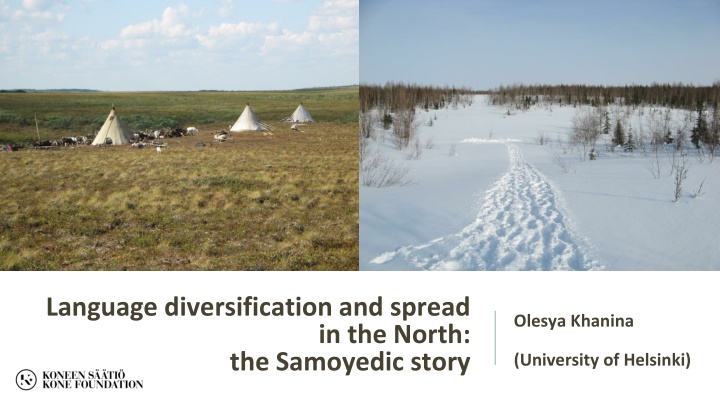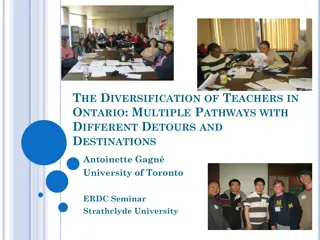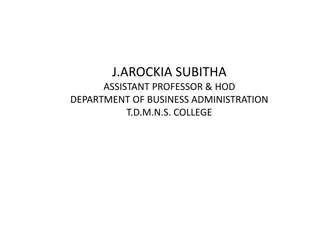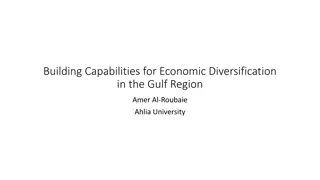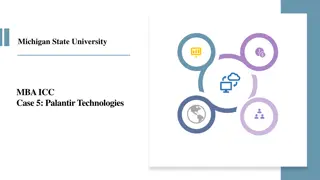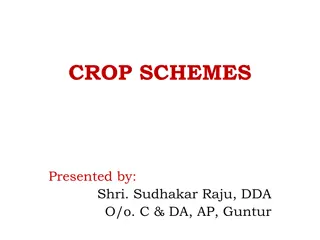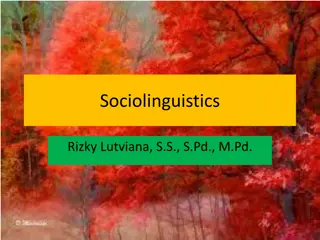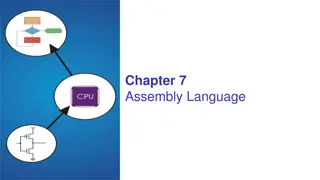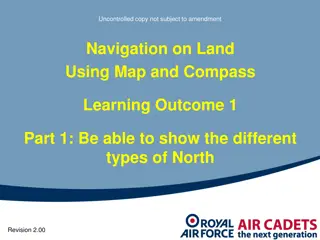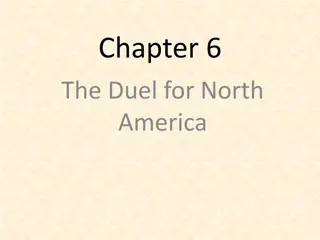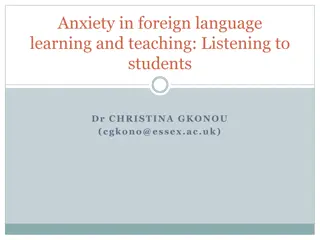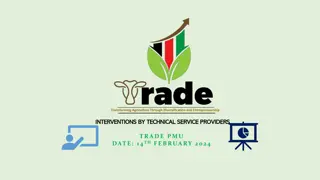Language Diversification in the North: The Samoyedic Story
This project at the University of Helsinki focuses on the diversification and spread of the Samoyedic languages, aiming to increase available data through linguistic, historical, and genetic evidence. The team led by Olesya Khanina explores the northward spread of Samoyedic speakers, internal linguistic relationships, structural and lexical variations, and more.
Download Presentation

Please find below an Image/Link to download the presentation.
The content on the website is provided AS IS for your information and personal use only. It may not be sold, licensed, or shared on other websites without obtaining consent from the author.If you encounter any issues during the download, it is possible that the publisher has removed the file from their server.
You are allowed to download the files provided on this website for personal or commercial use, subject to the condition that they are used lawfully. All files are the property of their respective owners.
The content on the website is provided AS IS for your information and personal use only. It may not be sold, licensed, or shared on other websites without obtaining consent from the author.
E N D
Presentation Transcript
Language diversification and spread Olesya Khanina in the North: the Samoyedic story (University of Helsinki)
The overview of the project Funded by the Kone foundation 2021-2025, started in October 2021 University of Helsinki, Department of Finnish, Finno-Ugric, and Scandinavian studies The team: Olesya Khanina (expert on Samoyedic, sociolinguistics), Valentin Gusev (expert on Samoyedic, historical linguistics), Yuri Koryakov (linguistic geography, lexical wordlists), Kaj Syrj nen (computational analysis), a postdoc (geospatial modelling)
The aims of the project 1. Increase the body of publicly available data on Samoyedic (1.a) a typologically oriented pan-dialectal grammar of Enets, (1.b) commented data on the easternmost Yenisei dialect of Tundra Nenets, (1.c) the oldest NS wordlists collected by Gerhard Friedrich M ller in 1733-1743 (1.d) unified comparative wordlists of all NS languages, including dialects, with cognate coding (ca. 200 words)
The aims of the project 2. Reconstruct the northward spread of Samoyedic speakers and the rise of the internal diversity in their languages - ranges of structural and lexical variation in NS languages, their changes with time: internal linguistic relationship between NS - possible source(s) of substrate in NS languages: differences between individual NS languages, similarities with non-NS languages of the area - the social past that this relationship reflects: how did the NS spread proceed and how has all the modern diversity arisen - combining linguistic, historic, ethnographic, archeological, and genetic evidence into the same perspective: was the spread rapid or gradual? did it primarily involve human migration, language shift, or a combination of both? - the northward spread of Samoyedic at the background of other known language spreads
The interdisciplinarity - ranges of structural and lexical variation in NS languages, their changes with time: internal linguistic relationship between NS - changes in geographic distribution of NS languages over the last 400 years: collection of data from written sources, mapping it - computational studies of the unified comparative wordlists to identify any cases of secondary convergence in NS missed so far - the social past that this relationship reflects: how did the NS spread proceed and how has all the modern diversity arisen - a computational study in phylogeographic and/or geospatial modelling to locate the most probable area of Proto-NS language and subsequent migrations, based on current and historic locations of attested NS languages and on environmental data for the area - combining linguistic, historic, ethnographic, archeological, and genetic evidence into the same perspective - literature overview
Example of Enets: tracking changes in geography
The interdisciplinarity - ranges of structural and lexical variation in NS languages, their changes with time: internal linguistic relationship between NS - changes in geographic distribution of NS languages over the last 400 years: collection of data from written sources, mapping it - computational studies of the unified comparative wordlists to identify any cases of secondary convergence in NS missed so far - the social past that this relationship reflects: how did the NS spread proceed and how has all the modern diversity arisen - a computational study in phylogeographic and/or geospatial modelling to locate the most probable area of Proto-NS language and subsequent migrations, based on current and historic locations of attested NS languages and on environmental data for the area - combining linguistic, historic, ethnographic, archeological, and genetic evidence into the same perspective - literature overview
The paradigm of the project We consider it hugely important to connect language changes to changes in human life: geography, subsistence, social patterns, sociolinguistics, etc. This is still not so common in Uralistics! So a big step here is not even to collect new data on the extralinguistic parameters, but at least to start asking ourselves this kind of questions (and see what kind of data are already available). Then in our next project we will finally be collecting the new extralinguistic data!
First results Connecting breakthroughs in history of reindeer herding to northward spurts of Samoyedic migrations (Khanina 2022) We have started to compile a list of Northern Samoyedic isoglosses and they point to equal shares of innovations that spread within a subbranch and across subbranches (Gusev & Khanina, In prep.).
NS isoglosses Enets, and in particular Tundra Enets, has similar number of shared features both with Tundra Nenets and with Nganasan (innovations and retentions). Tundra Enets shares with Nganasan twice as many features than it shares with Forest Enets. Languages that were traditionally described as more related show phonetic and morphological features in common. Languages that were traditionally described as being in secondary contact show few phonetic features, but many morphological features and some syntatic features. It would be good to devise a way to measure shared lexicon.
IMAGE OF A VILLAGE (SUMMER, WINTER) Thank you!
